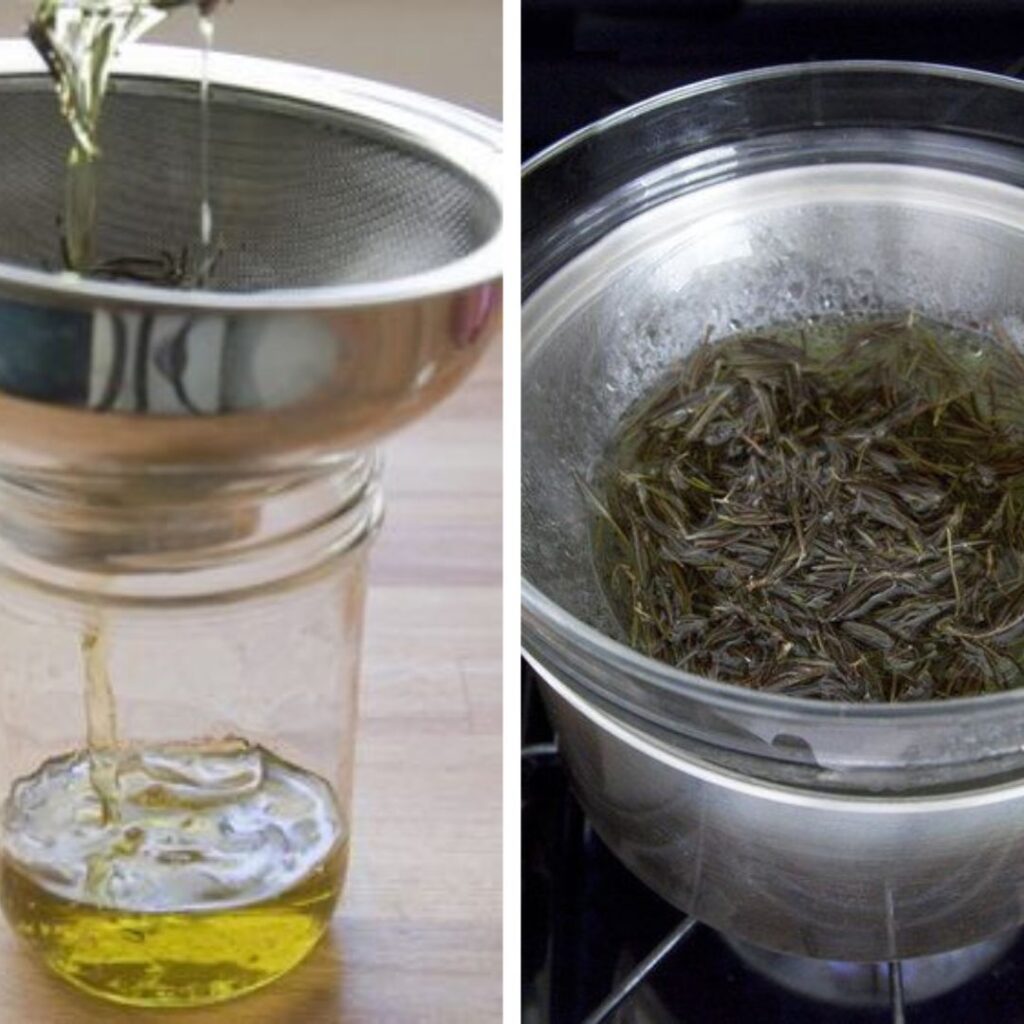
The extraction of oil from rosemary is a simple process that allows you to take advantage of the fragrant and potentially beneficial properties of this herb. Rosemary oil has culinary, aromatherapy, and medicinal applications. Here’s a quick and easy way to extract rosemary oil using the cold infusion method:
Materials Needed:
- Fresh rosemary sprigs or leaves
- A carrier oil (e.g., olive oil, coconut oil, jojoba oil)
- A glass jar with a tight-fitting lid
- Cheesecloth or fine mesh strainer
- A clean, dry glass bottle for storing the oil
Instructions:
- Prepare the Rosemary:
- Start by ensuring that your rosemary is clean and dry. Fresh rosemary works best, but you can also use dried rosemary if that’s what you have.
- Chop or Crush the Rosemary:
- Chopping or lightly crushing the rosemary leaves can help release their essential oils more effectively.
- Fill the Glass Jar:
- Place the chopped or crushed rosemary leaves into a clean glass jar. Leave some space at the top, as you’ll need to pour the carrier oil over them.
- Pour the Carrier Oil:
- Choose your carrier oil (olive oil is a popular choice). Pour the oil over the rosemary leaves in the jar until they are fully submerged. Ensure there is about an inch of oil above the top of the rosemary.
- Seal the Jar:
- Secure the jar with a tight-fitting lid to prevent air from getting in.
- Infusion Period:
- Place the sealed jar in a cool, dark place, away from direct sunlight. Let the rosemary infuse in the oil for at least two weeks, but longer infusion times, up to a month, can yield a more potent oil.
- Shake and Check:
- Give the jar a gentle shake every few days to encourage the infusion process.
- Strain the Oil:
- After the desired infusion period, strain the oil to remove the rosemary leaves. You can do this by using a cheesecloth or a fine mesh strainer placed over a clean bowl or another jar.
- Store the Oil:
- Pour the strained rosemary oil into a clean, dry glass bottle or container. Seal the bottle tightly.
- Label and Date:
- It’s a good practice to label the bottle with the type of oil (e.g., “Rosemary-Infused Olive Oil”) and the date it was made.
Your homemade rosemary oil is now complete. It can be used to add flavor to food, as a massage oil, or in aromatherapy applications. To keep its quality and potency, keep it in a cool, dark place.